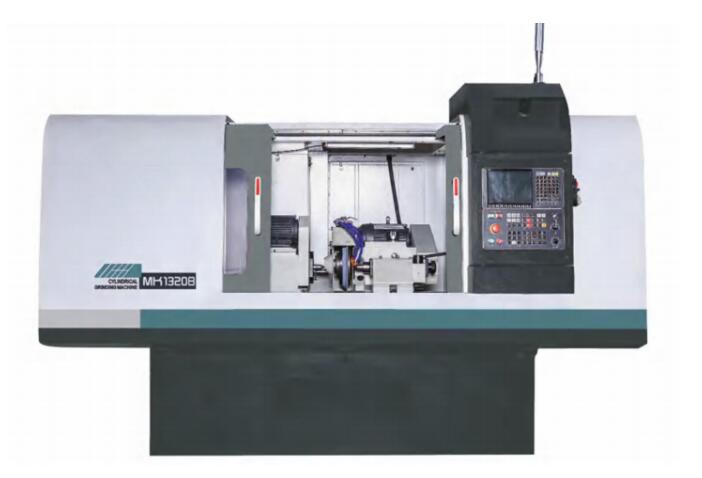1. Use a forming wheel to grind the punch,
That is, the grinding wheel is trimmed into an inverted surface that is completely consistent with the surface of the workpiece, and then the workpiece is ground with the grinding wheel to obtain the desired shape. There are many ways to dress the grinding wheel, the main ones are as follows:

(1) Dressing the grinding wheel with diamond
When dressing the grinding wheel with diamond, most of them are to dress the geometry of the forming surface in sections, but some dress the grinding wheel into a reshape. This method of dressing the grinding wheel is accomplished by various tools for dressing the grinding wheel. The grinding wheel repair tools in production mainly include angle repairing, arc grinding wheel repairing tools, universal grinding wheel repairing tools, and profiling grinding wheel repairing tools.
Horizontal tool for repairing the angle of the grinding wheel. It is mainly used to grind forming grinding wheels with various angles between 0º and 90º, and then use this grinding wheel to grind the inclined surface of the workpiece.
When dressing the grinding wheel, the position of the diamond knife tip is adjusted by calculating the pad value according to the convex or concave shape and radius of the grinding wheel to be repaired.
The horizontal arc trimming grinding wheel fixture can trim various concave and convex arcs with different radii, or the profile connected by the arc and the arc.
When dressing a non-circular arc surface, if the shape of the workpiece to be ground is more complicated or the contour is non-circular, a special profiling tool can be used to dress the grinding wheel. The tool is a special purpose; it is a master tool that loves to dress the convex shaped grinding wheel.
The castanotype tool for dressing the concave forming wheel is basically the same as the master tool for the convex forming wheel, but the contacts of the master template used should be pointed.
The above-mentioned several grinding wheel repair tools should be paid attention to when using, and the diamond tool bar used must be clamped and must not be loosened.
(2) Use the roller to squeeze the grinding wheel
The profile size of the extruded roller is the same as that of the part. The wheel circumference is provided with straight grooves with unequal distances in the radial direction. The width of the groove is 1.5~2.5mm, and the depth should exceed the lowest point of the forming part by more than 2.5 mm. The groove mainly functions as a cutting edge and can accommodate the squeezed sand particles. The material and the center line of the extrusion wheel are at an oblique angle of 10º~15º, and the iron sheet is embedded in 1 to 2 straight grooves. After the extrusion finishing, the iron sheet is also processed into shape. This iron sheet can be used to check the grinding profile and Forming grinding wheel or reverse roller. The diameter of the roller is generally φ50~60mm.
The squeeze wheel tool is mainly composed of two thimble. The living needles are driven by electric motors through pulleys or gears. When the rolling theory gradually presses against the grinding wheel, under the action of pressure, the grinding wheel finally obtains the required shape.
When the squeeze wheel tool is in use, it is installed on the magnetic worktable of the surface grinder. When installing, the axis of the roller must be parallel to the axis of the grinding wheel.
In addition, in order to refurbish the grinding wheel, two tools can be installed on the ordinary surface grinder at the same time as the extrusion wheel and the diamond dressing grinding wheel. At this time, the diamond knife can be profiled with a template instead of a jig. The parts can be ground with the grinding wheel trimmed with a diamond knife according to the template. But on this kind of device, there should be a tracker. The diamond knife interacts with the root tracer, and can be installed and rotated through the same angle at the same time, even if the position is not easy to repair the curve, it can also form a satisfactory profile.
2. Grinding with jigs
When grinding the workpiece, the workpiece can be clamped on a special fixture according to certain conditions, and in the morning of the processing, the position is fixed or constantly changed for grinding to obtain the desired shape. Commonly used grinding clamps include: precision flat-nose pliers, sinusoidal magnetic table, sinusoidal indexing fixture, universal fixture, rotating magnetic table and center hole splint, etc. This grinding method is generally carried out on a surface grinder.
In production, in order to ensure the quality and efficiency of grinding, a comprehensive method of forming grinding wheels and fixtures is generally used, which can greatly reduce the cost of parts manufacturing.
3. Conversion of forming grinding process size
When forming grinding, the operator needs to convert the design size of the pattern into the process size of forming grinding. The reason is that the dimensions of process equipment parts are generally marked on the basis of design, and the construction basis selected for forming and grinding is often inconsistent with the design basis. However, due to the different processing methods of individual parts, there are also different requirements for the conversion of the forming and grinding process dimensions.


